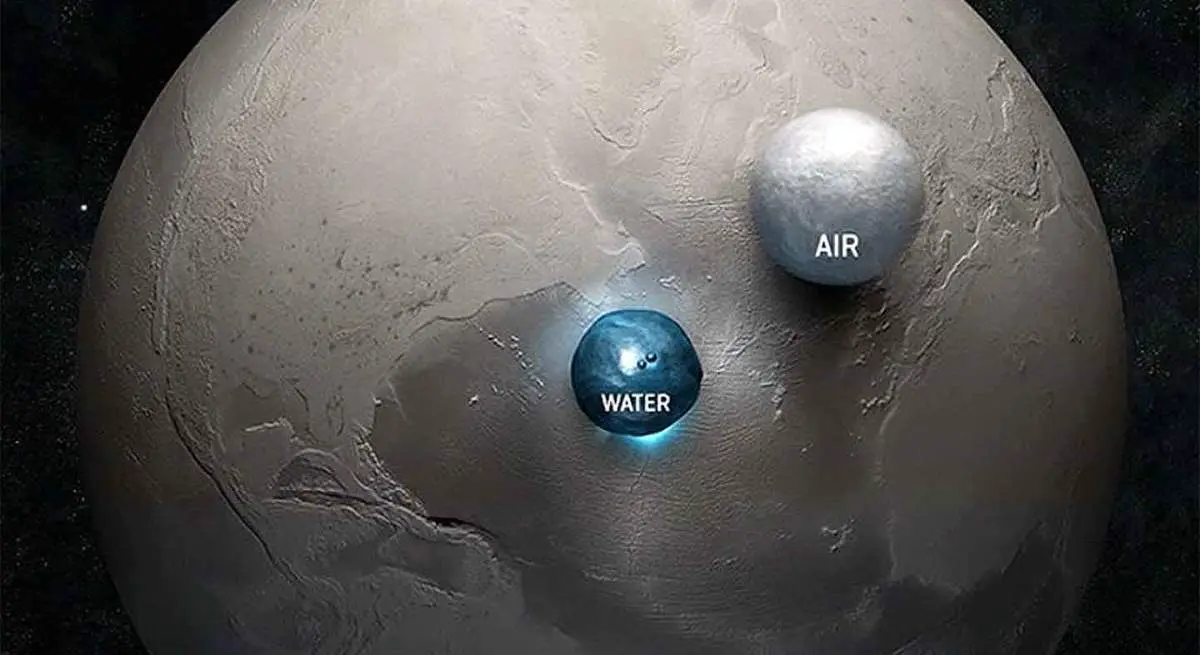Dr. Adam Nieman created this image in 2003, illustrating the volume of the planet Earth’s oceans and atmosphere (if the air were all at sea-level density) by rendering them as spheres sitting next to the Earth instead of spreading out over its surface.

With this image, Dr. Adam Nieman won the Novartis/Daily Telegraph Visions of Science photo competition in 2003.
From space, the Earth looks like a water planet. Oceans cover more than 70 percent of our planet’s surface with an average depth of 14,000 feet (4267 meters). Yet, as this image shows, if every drop of water in the world was collected in a sphere, it would be just 869 miles (1400 km) across – barely big enough to cover Eastern Europe.
In the image we can see also all the air in the atmosphere (5140 trillion tonnes of it) gathered into a ball at sea-level density.

Related: Oceans of the Solar System
Three-quarters of the mass of the Earth’s atmosphere is within about 11 km (6.8 mi; 36,000 ft) of the surface. The atmosphere becomes thinner and thinner with increasing altitude, with no definite boundary between the atmosphere and outer space. The Exosphere, the outermost layer of Earth’s atmosphere extends from an altitude of about 700 km above sea level to about 10,000 km (6,200 mi; 33,000,000 ft) where it merges into the solar wind.
The Kármán line, at 100 km (62 mi), or 1.57% of Earth’s radius, is often used as the border between the atmosphere and outer space. Atmospheric effects become noticeable during atmospheric reentry of spacecraft at an altitude of around 120 km (75 mi).
Our most basic common link is that we all inhabit this small planet. We all breathe the same air.
John F. Kennedy

Related: How Much Water is on Earth?
Sources
- “Pictures that cast new light on our planet” on The Telegraph website
- Atmosphere of Earth on Wikipedia
- Moon Landings: All-Time List [1966-2025] - February 2, 2025
- What Is Max-Q and Why Is It Important During Rocket Launches? - January 16, 2025
- Top 10 Tallest Rockets Ever Launched [2025 Update] - January 16, 2025
